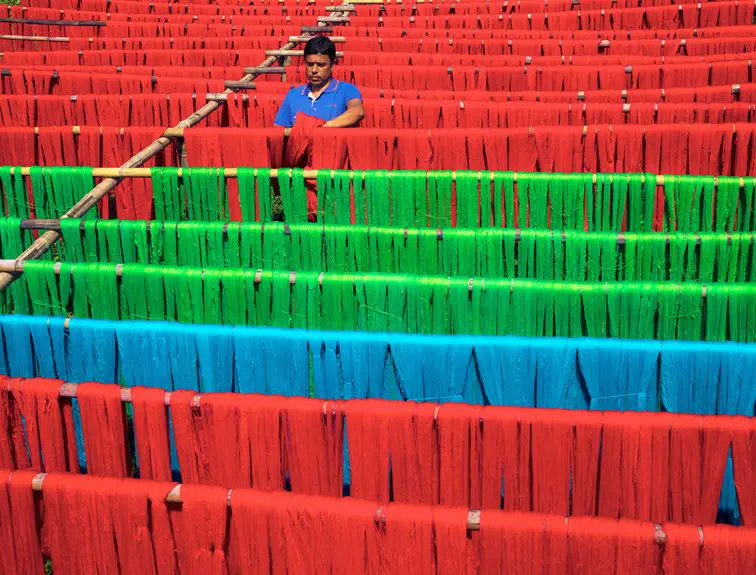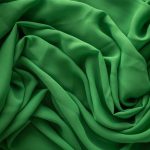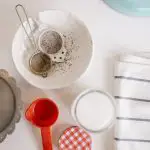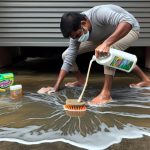If you’re tired of pesky stains ruining your favorite fabrics, you might wonder if there’s a natural way to boost their stain resistance. With a few common household items, you can create effective, eco-friendly solutions that enhance fabric durability. But before you plunge into DIY methods, it’s important to understand how different techniques work and the potential challenges you might face. What are the best options available to you?
Table of Contents
Key Takeaways
- Natural fibers like cotton are more absorbent, making them prone to staining compared to synthetic fabrics like polyester and nylon.
- DIY methods like baking soda paste and cornstarch treatment can effectively absorb and lift fresh stains from fabrics.
- White vinegar can enhance fabric’s stain repellent ability when used as a rinse aid or spot treatment.
- Beeswax provides a natural water-resistant finish, creating a protective barrier while maintaining breathability.
- Regular application of DIY treatments can improve fabric longevity, but effectiveness may vary based on the fabric type and stain.
Understanding Natural Stain Resistance in Fabrics
When you think about fabrics, it’s essential to understand how some materials naturally resist stains.
Fabrics like polyester and nylon are often more stain-resistant due to their synthetic composition. Their tightly woven fibers create a barrier that liquids have trouble penetrating.
Fabrics such as polyester and nylon resist stains effectively due to their tightly woven synthetic fibers.
On the other hand, natural fibers like cotton and linen are more absorbent, making them prone to staining. Some wool types also show a degree of stain resistance, thanks to their natural oils.
Additionally, fabrics treated with special finishes can enhance their stain-repellent qualities. Knowing these characteristics can help you choose the right materials for your projects or wardrobe.
Effective DIY Methods for Stain Resistance
While you may not be able to make every fabric completely stain-proof, there are several effective DIY methods to enhance their stain resistance.
Here are three methods you can try:
- Baking Soda Paste: Mix baking soda with water to form a paste. Apply it to the fabric, let it sit for a few hours, then rinse. This helps absorb stains.
- Cornstarch Treatment: Sprinkle cornstarch on fresh spills. It’ll soak up the liquid and make it easier to clean the fabric without setting the stain.
- Essential Oil Spray: Combine water with a few drops of essential oils like tea tree or lavender. Spray lightly on your fabric to create a protective barrier against stains.
The Role of Vinegar in Fabric Protection
Vinegar plays an essential role in fabric protection, especially when it comes to preventing stains and odors. You can use white vinegar as a natural fabric conditioner, enhancing the fabric’s ability to repel dirt and stains.
Simply add a cup of vinegar to your laundry during the rinse cycle. This not only helps break down any lingering odors but also softens the fabric without harsh chemicals.
For spot treatment, mix equal parts of vinegar and water in a spray bottle. Spray it on affected areas, let it sit for a few minutes, and then blot with a clean cloth.
This method effectively lifts stains before they set, keeping your fabrics looking fresh. Incorporating vinegar into your fabric care routine can greatly enhance their longevity.
Exploring Beeswax for Water-Resistant Finishes
Beeswax is a fantastic option for creating water-resistant finishes that you can easily apply at home.
You’ll love how it not only protects your surfaces but also enhances their natural beauty.
Let’s explore the best application techniques and the benefits of using this versatile wax.
Application Techniques Explained
When you’re looking to create a water-resistant finish, knowing how to apply beeswax effectively can make a significant difference. Here’s a quick guide to help you get started:
- Prepare the Fabric: Clean the fabric thoroughly to remove any dirt or oils. This guarantees a better bond with the beeswax.
- Melt the Beeswax: Gently heat the beeswax until it’s liquefied. You can use a double boiler or a microwave in short bursts, stirring frequently.
- Apply Evenly: Use a soft cloth or brush to apply the melted beeswax evenly across the fabric. Make sure to cover all areas for consistent protection.
Following these steps will help you achieve a reliable water-resistant finish with beeswax.
Enjoy your DIY project!
Benefits of Beeswax
For those seeking a natural solution to protect fabrics, beeswax offers impressive benefits that go beyond simple water resistance. When applied, it forms a protective barrier, helping to repel water while maintaining breathability. This means your fabrics can resist spills and stains without feeling heavy or crunchy.
Beeswax is also eco-friendly and biodegradable, making it a sustainable choice for DIY enthusiasts. Additionally, it can enhance the fabric’s appearance, giving it a subtle sheen.
You’ll appreciate that it’s easy to work with—simply melt it and apply it to your chosen fabric. By choosing beeswax, you not only protect your items but also embrace a natural method that’s safe for your family and the environment.
Homemade Solutions vs. Commercial Products
While both homemade solutions and commercial products offer ways to enhance stain resistance, choosing the right option often depends on your specific needs and preferences.
Here are a few factors to evaluate when making your decision:
- Cost: Homemade solutions often save you money, using ingredients you likely already have at home.
- Effectiveness: Commercial products may provide stronger protection against tough stains, but homemade options can work well for everyday spills.
- Safety: Natural ingredients in homemade solutions can be safer for your family and the environment compared to some commercial chemicals.
Ultimately, weigh these aspects carefully to determine which method aligns best with your lifestyle and desired results.
Benefits of Using Natural Treatments
Using natural treatments for stain resistance offers you eco-friendly options that are better for the planet.
Not only are these solutions cost-effective, but they also guarantee healthier fabric treatments for you and your family.
You’ll find that choosing natural methods can make a significant difference in both your cleaning routine and the environment.
Eco-Friendly Options Available
When you choose eco-friendly options for stain resistance, you’re not just protecting your surfaces—you’re also making a positive impact on the environment.
Natural treatments help you avoid harsh chemicals, promote sustainability, and can often be more effective than synthetic alternatives. Here are three benefits of using these treatments:
- Healthier Home: Natural ingredients reduce exposure to toxic substances, improving indoor air quality.
- Biodegradable Solutions: Most eco-friendly products break down naturally, minimizing environmental impact.
- Cost-Effective: Many natural treatments can be made at home with common household items, saving you money.
Cost-Effective Solutions
Choosing eco-friendly options not only benefits the environment but also opens up a world of cost-effective solutions.
Natural treatments for stain resistance, like vinegar, baking soda, and essential oils, are often cheaper than commercial products. You probably already have many of these ingredients in your pantry, saving you money and reducing waste.
Additionally, these DIY methods can extend the life of your fabrics, preventing premature replacements that can strain your budget.
By opting for natural alternatives, you’re not just cutting costs; you’re also avoiding the harsh chemicals found in many store-bought treatments. This way, you get a dual benefit—protecting your wallet while making your fabrics more stain-resistant and eco-friendly.
It’s a win-win for everyone!
Healthier Fabric Treatments
Natural treatments for fabric not only enhance stain resistance but also promote a healthier environment in your home. By choosing these methods, you’re making a conscious decision for your health and the planet.
Here are some benefits of using natural treatments:
- Non-Toxic Ingredients: You avoid harmful chemicals found in conventional fabric treatments, reducing the risk of allergies and skin irritations.
- Eco-Friendly: Many natural treatments are biodegradable, minimizing your impact on the environment and supporting sustainable practices.
- Improved Air Quality: Using natural options helps maintain better indoor air quality, as they don’t release harmful fumes or volatile organic compounds (VOCs).
Embracing healthier fabric treatments not only keeps your fabrics looking great but also contributes to a safer, cleaner home.
Challenges to Consider With DIY Stain Resistance
Although DIY stain resistance can be a cost-effective solution for protecting your surfaces, several challenges can complicate the process.
First, the effectiveness of natural treatments often varies, meaning they mightn’t provide the level of protection you expect. You may also face difficulties in applying these solutions uniformly, leading to uneven results.
Additionally, some natural ingredients can alter the fabric’s texture or color, which may not be desirable. Testing on a small area is essential but can be overlooked.
Finally, relying solely on DIY methods might give you a false sense of security, as they may not withstand all types of stains. Balancing these challenges with your goals is vital for achieving satisfactory results.
Frequently Asked Questions
Can I Use Essential Oils for Natural Stain Resistance?
Ever wondered if nature holds the secret to stain resistance? You can use essential oils for a fresh scent and mild repelling properties, but they won’t fully protect against tough stains without additional treatments.
How Do I Test Fabric for Stain Resistance?
To test fabric for stain resistance, spill a small amount of liquid, like coffee or juice, on it. Wait a few minutes, then blot and observe how much stain remains. You’ll see how effective it is.
Are There Specific Fabrics That Resist Stains Better?
Yes, certain fabrics resist stains better. Synthetic fibers like polyester and nylon tend to repel spills more effectively than natural fibers. Choosing tightly woven materials also enhances stain resistance, making your fabrics easier to clean.
How Long Do Natural Treatments Typically Last?
Think of natural treatments as a gentle rain, rejuvenating but fleeting. They typically last a few washes before fading, so you’ll need to reapply them periodically to keep your fabrics looking their best.
Can I Combine Different Natural Treatments for Better Results?
You can definitely combine different natural treatments for better results. Experimenting with various methods might enhance effectiveness. Just be mindful of each ingredient’s properties, as some combinations could yield unexpected reactions or diminish the desired effect.
- Why Is Percale Considered a Superior Sheet? - July 15, 2025
- Why Do Percale Sheets Wrinkle So Much? The Science Behind It - July 15, 2025
- Why Can’t I Find Old-Fashioned Polyester-Cotton Percale Sheets Anymore? - July 15, 2025







